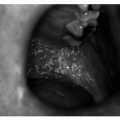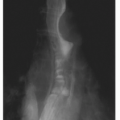Between age 20 and 40, both men and women attain their highest level of muscular strength. Strength loss in the elderly is directly related to their decreasing mobility and declining fitness level.
The mechanism of injury will provide the clinician with the critical information needed to proceed in making the diagnosis and formulating a treatment plan.
The Spurling maneuver is helpful in assessing encroachment on a cervical nerve root by disc pathology.
Impingement syndrome of the shoulder is diagnosed by positive Neer and/or Hawkins signs and a painful arc.
Nighttime shoulder pain is characteristic of rotator cuff pathology.
The sudden appearance of a bulge in the lower arm on strenuous use, causing the arm to have a “Popeye” appearance, is usually diagnostic of biceps tendon rupture.
Symptomatic or markedly swollen olecranon bursitis may be aspirated, followed by corticosteroid instillation and a 48-hour compression dressing.
Dupuytren contracture will cause flexion contractures of fingers, which must be surgically treated if the disease significantly impairs the function of the hand.
When evaluating osteoarthritis of the knee, anteroposterior radiographs are much more valuable when accompanied by weight-bearing views.
One of the historic hallmarks of the diagnosis of plantar fasciitis is the severe pain on taking the first few steps in the morning.
be remembered that, regardless of the pattern of injury, prolonged immobility will lead to a lengthy recovery and great difficulty in returning to the previous level of functioning. A gradual return to activity should be initiated as soon as feasible to avoid disabling or other negative ramifications from a relatively minor problem.
movement was the patient doing when the injury occurred? When was the problem first noted? Was it a single event or has it developed gradually over time? Has it been present for some time and then suddenly worsened (implying that this is an acute event superimposed on a chronic condition)? What makes the pain worse? Have there been any similar problems in the past? What medications are you taking? What is the past medical and surgical history?
should be gradually increased to 60 seconds as flexibility increases. Physical modalities may be added if the patient is in severe discomfort; these would include massage, ultrasound, and/or phonophoresis (Evidence Level B). Manipulation of the spine is contraindicated.
TABLE 22.1 DIFFERENTIAL DIAGNOSES FOR MUSCULOSKELETAL/SOFT TISSUE CONDITIONS (ICD-9) | |||||||||||||||||||||||||||||||||||||||||||||||||||||||||||||||||||||||||||||||||||||||||||
|---|---|---|---|---|---|---|---|---|---|---|---|---|---|---|---|---|---|---|---|---|---|---|---|---|---|---|---|---|---|---|---|---|---|---|---|---|---|---|---|---|---|---|---|---|---|---|---|---|---|---|---|---|---|---|---|---|---|---|---|---|---|---|---|---|---|---|---|---|---|---|---|---|---|---|---|---|---|---|---|---|---|---|---|---|---|---|---|---|---|---|---|
| |||||||||||||||||||||||||||||||||||||||||||||||||||||||||||||||||||||||||||||||||||||||||||
TABLE 22.2 EVALUATIONS OF THE SENSORY AND MOTOR FUNCTIONS OF THE NERVE ROOTS | |||||||||||||||||||||
|---|---|---|---|---|---|---|---|---|---|---|---|---|---|---|---|---|---|---|---|---|---|
|
Stay updated, free articles. Join our Telegram channel

Full access? Get Clinical Tree





